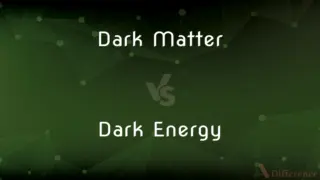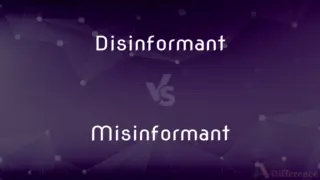Raja vs. Maharaja — What's the Difference?
By Tayyaba Rehman & Maham Liaqat — Updated on March 11, 2024
Raja refers to a king or prince in Indian subcontinent, signifying a ruler of lesser rank, while Maharaja denotes a great king or high king, suggesting a higher level of authority and prestige.

Difference Between Raja and Maharaja
Table of Contents
ADVERTISEMENT
Key Differences
Raja is a title used in the Indian subcontinent to denote a monarch or princely ruler of relatively smaller states. It conveys a sense of royalty, albeit on a lesser scale compared to higher titles. On the other hand, Maharaja translates to "great king" and is used for rulers with greater territorial control and higher status. This distinction highlights the hierarchical structure of royalty and governance in historical and contemporary India.
The term Raja, while denoting sovereignty, implies a level of autonomy within a limited domain. It is often used in historical texts and modern contexts to signify the head of a princely state that was part of a larger empire or federation. Whereas Maharaja is reserved for the sovereigns who had significant control over larger areas, often ruling over several Rajas, reflecting their superior rank and power within the regional hierarchy.
In terms of cultural significance, Raja carries with it the legacy of valor, governance, and regional identity. It is a term deeply embedded in the folklore, history, and administration of the Indian subcontinent. Maharaja, however, conveys a grandeur and magnificence, associated with great wealth, vast territories, and a more pronounced role in shaping the history and culture of the region.
Regarding recognition and honor, individuals bestowed with the title of Raja were often recognized for their leadership within a specific locale, commanding respect and loyalty from their subjects. In contrast, Maharajas were celebrated figures on a much broader scale, enjoying recognition and veneration that extended beyond their immediate territories, sometimes even internationally.
When it comes to historical context, Rajas often played pivotal roles in local governance, warfare, and the arts, contributing significantly to the cultural and social development of their regions. Maharajas, on the other hand, were instrumental in forming alliances, engaging in significant military campaigns, and fostering economic and cultural advancements across wider territories, leaving a lasting legacy on the subcontinent’s landscape.
ADVERTISEMENT
Comparison Chart
Meaning
King or prince
Great king or high king
Authority Level
Lower, ruling smaller states
Higher, ruling larger states or regions
Historical Role
Local governance, regional defense
Significant military campaigns, alliances
Cultural Impact
Regional identity, folklore
National history, grandeur
Recognition
Local and regional respect
Broad, often international recognition
Compare with Definitions
Raja
A princely ruler of a small state.
The Raja of Pudukkottai was known for his benevolent rule.
Maharaja
A title reflecting grandeur and vast territories.
The palaces of the Maharaja were a testament to his wealth.
Raja
A symbol of regional governance and autonomy.
The Raja maintained peace and order in his domain.
Maharaja
A leader with international recognition and influence.
The Maharaja represented India on various international platforms.
Raja
A title for a monarch in the Indian subcontinent.
Raja Ram Mohan Roy played a key role in social reforms in India.
Maharaja
A sovereign ruler over several Rajas.
The Maharaja unified the regions under his command.
Raja
A term used in historical contexts to denote kingship.
The Rajas of India were pivotal in its medieval history.
Maharaja
A figure of significant historical and cultural impact.
The Maharaja patronized arts and culture during his reign.
Raja
A representative of royal lineage and heritage.
The Raja was revered as a descendant of ancient rulers.
Maharaja
A great or high king in the Indian subcontinent.
Maharaja Ranjit Singh is remembered as a formidable ruler.
Raja
Raja (; from Sanskrit: राजन्, IAST rājan-), is a royal title used for Indian monarchs. The title is equivalent to king or princely ruler in the Indian subcontinent and Southeast Asia.
Maharaja
Mahārāja (; also spelled Maharajah, Maharaj) is a Sanskrit title for a "great ruler", "great king" or "high king". A few ruled mighty states informally called empires, including ruler raja Sri Gupta, founder of the ancient Indian Gupta Empire, and Chandragupta Maurya.
Raja
A prince, chief, or ruler in India or the East Indies.
Maharaja
A king or prince in India ranking above a raja, especially the sovereign of one of the former native states.
Raja
Alternative spelling of rajah
Maharaja
Used as a title for such a king or prince.
Raja
Same as Rajah.
Maharaja
A Hindu monarch ranking above a raja, an emperor.
Raja
A Hindu prince or king in India
Maharaja
A sovereign prince in India; a Hindu prince or king in India ranking above a raja; - a title given also to other persons of high rank.
Raja
Type genus of the family Rajidae
Maharaja
A great raja; a Hindu prince or king in India ranking above a raja
Common Curiosities
What does Maharaja mean?
Maharaja means "great king" or "high king," denoting a ruler with greater authority over larger territories.
How does the authority of a Raja compare to a Maharaja?
A Raja has lesser authority, ruling smaller states, while a Maharaja has higher authority over larger territories.
Can a Raja become a Maharaja?
Yes, a Raja could be elevated to Maharaja status through expansion of territory, significant achievements, or imperial favor.
Are there contemporary Rajas or Maharajas?
Yes, while their political power is symbolic today, titles are still used ceremonially in some regions.
How do people today view Rajas and Maharajas?
They are viewed with a mix of historical interest, cultural pride, and sometimes as symbols of a bygone era.
Did Rajas and Maharajas have absolute power?
Their power varied by time and place, influenced by local politics, colonial rule, and federations.
What symbols are associated with Rajas and Maharajas?
Symbols include palaces, thrones, regalia, and sometimes unique titles or honorifics.
What is a Raja?
A Raja is a king or prince in the Indian subcontinent, ruling over a smaller state or region.
How did Maharajas impact the Indian subcontinent?
Maharajas played key roles in shaping political, cultural, and economic landscapes across broader regions.
What is the cultural significance of a Raja?
A Raja holds regional significance, embodying local governance, culture, and history.
How were Rajas and Maharajas chosen?
Selection was typically hereditary, though it could also involve political maneuvering, conquest, or appointment by higher authority.
What kind of legacy does a Maharaja leave?
Maharajas leave a legacy of grandeur, significant contributions to culture, history, and national identity.
What was the role of a Raja in governance?
Rajas were involved in local governance, justice, and defense within their territories.
Were Rajas and Maharajas only found in India?
While primarily associated with India, these titles were used in various forms across the Indian subcontinent.
Is the title of Raja or Maharaja still legally recognized?
While not holding legal power in governance, some titles are officially recognized for ceremonial and cultural purposes.
Share Your Discovery

Previous Comparison
Idealist vs. Practical
Next Comparison
Damage vs. ImpairAuthor Spotlight
Written by
Tayyaba RehmanTayyaba Rehman is a distinguished writer, currently serving as a primary contributor to askdifference.com. As a researcher in semantics and etymology, Tayyaba's passion for the complexity of languages and their distinctions has found a perfect home on the platform. Tayyaba delves into the intricacies of language, distinguishing between commonly confused words and phrases, thereby providing clarity for readers worldwide.
Co-written by
Maham Liaqat














































